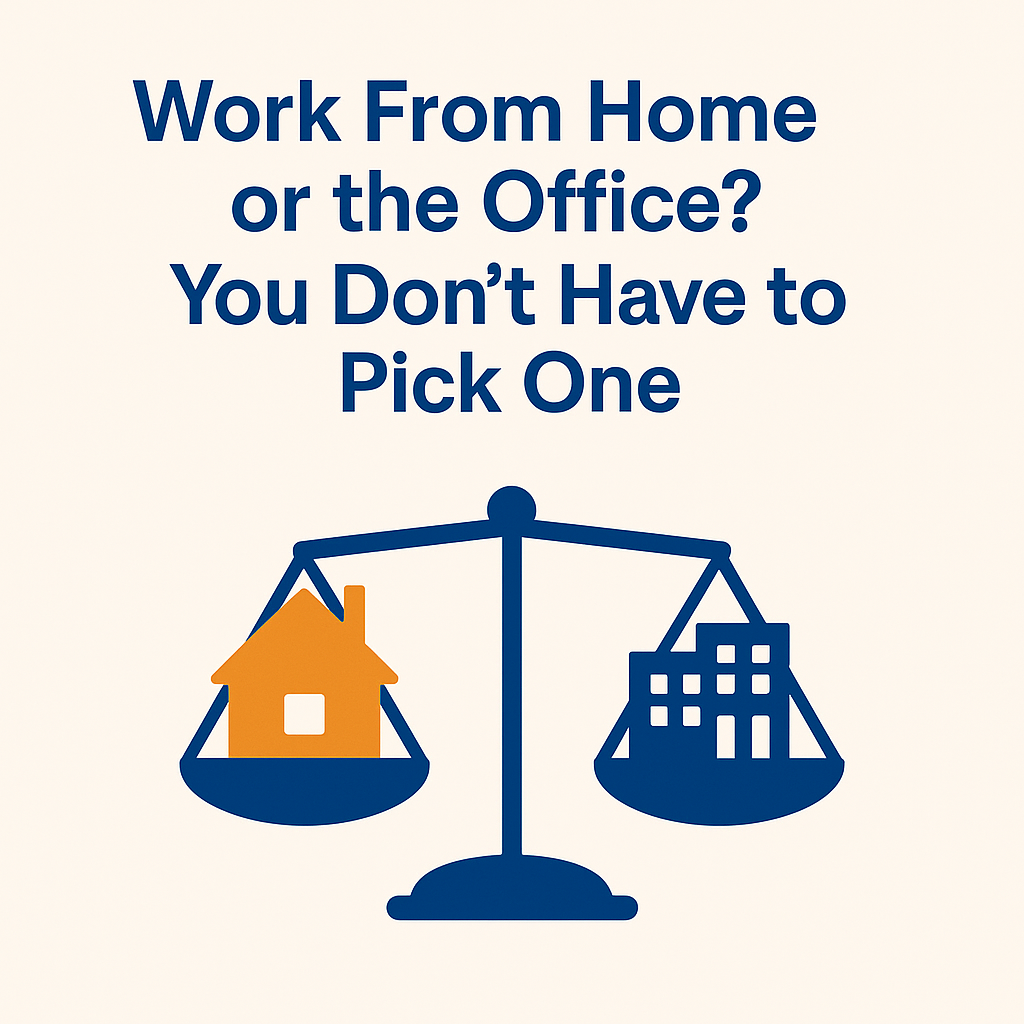Work From Home or the Office?
23 Sep

The great debate: should people work from home or come into the office? If you ask most companies, the answer swings like a pendulum. First it was “everyone remote, forever.” Then it was “back to the office, no exceptions.” The reality? Both extremes miss the point.
It’s Not About Where, It’s About How
What matters isn’t the location. It’s whether the work gets done, whether teams collaborate properly, and whether people stay sane doing it. Some jobs absolutely benefit from in-person interaction. Some jobs are actually better done from home. Most roles sit somewhere in between. The right balance isn’t about rules, it’s about outcomes.
The Hidden Costs of Getting It Wrong
Force everyone into the office and you risk losing good people who value flexibility.
Leave everyone at home all the time and you risk silos, miscommunication, and a culture that feels disconnected. Neither side is “free.” Both come with hidden costs. The trick is finding the balance where the benefits of one don’t get drowned out by the downsides of the other.
Tools Can Help, But Only If Used Right
This is where tech earns its keep. Microsoft Teams, SharePoint, Planner, Zoom, Slack; they’re all designed to bridge the gap between office and remote work. But here’s the catch: simply having the tools doesn’t mean they’re being used well (cue the shelfware problem again). If workflows aren’t thought through, hybrid work becomes a mess.
Balance Looks Different for Every Business
For some companies, it’s a rhythm: 3 days in, 2 at home. For others, it’s project-based: in-person when brainstorming, remote when executing. For others, it’s full flexibility: measure results, not office hours. There isn’t a one-size-fits-all answer. But there is a one-size-fits all question: does this setup make your people more effective without burning them out?
The Bottom Line
Work from home isn’t the enemy of the office. The office isn’t the enemy of work from home. The enemy is inflexibility. Find the balance. Back it up with the right tools and practices. And suddenly, it stops being about “where” and starts being about “what’s possible.”
Cheers,
Richard



Recent Comments